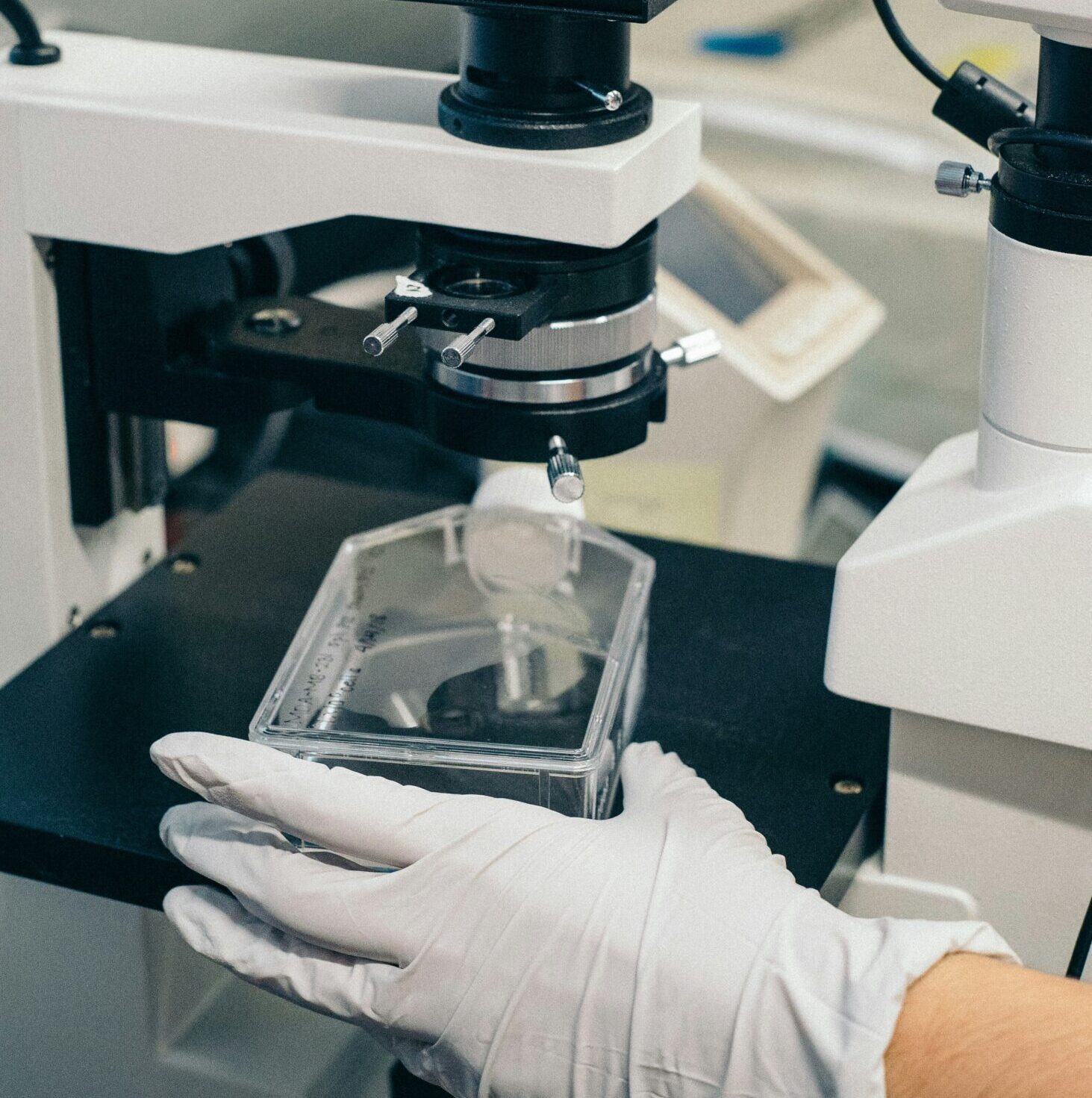Producing human Mesenchymal Stem Cells (MSCs) on a clinical scale is a complex endeavor, as there are no standardized optimal culture conditions universally adopted across laboratories. Factors like plate density, culture duration, and medium composition greatly impact the final characteristics of MSCs, complicating the comparison of products between different manufacturing centers. This variability also complicates the extrapolation of MSC safety and efficacy findings across various clinical studies.
Starting Culture Material
The collection and isolation of Mesenchymal Stem Cells (MSCs) involve various techniques depending on the tissue source.
Bone marrow-derived MSCs
Bone marrow, often preferred for its abundance, requires invasive procedures for harvesting and processing within 24 hours. While cryopreservation shows promise, further research is needed to assess its impact fully.
Umbilical cord-derived MSCs
Umbilical cord-derived MSCs offer advantages in potency and can be obtained through either explant or enzymatic methods. Adipose tissue, with its high stem cell yield, is acquired through liposuction and processed using enzymatic or mechanical methods.
Adipose-derived MSCs
Adipose-derived MSCs exhibit greater stability and proliferation rates compared to bone marrow-derived MSCs.
Adherence to regulatory standards and validation procedures are essential to ensure quality and safety throughout the manufacturing process.
Optimizing Culture Conditions and Expansion
For MSCs to proliferate optimally, they must adhere to the culture surface and grow without exceeding 80% confluence, preventing inhibition due to cell-to-cell contact. Proper seeding density is crucial to avoid continuous premature passages or excessively long-term cultures, both of which can lead to senescence or genetic instability.
Automating cell cultures for large-scale production of adherent cells can significantly reduce labor costs and enhance cell quality, which is crucial for scaling up processes. Utilizing bioreactors allows for more frequent feeding of the cultures, ensuring that metabolite levels critical for cell growth are maintained, resulting in faster and healthier MSC expansion compared to traditional methods.
Oxygen Concentration Considerations
Oxygen concentration is a critical factor in in MSC culture. In their natural low-oxygen niches, MSCs primarily rely on anaerobic glycolysis for ATP production to avoid oxidative damage. However, MSC expansion in culture is often conducted under normoxic conditions (21% O2), at oxygen levels 4-10 folds greater than their natural physiological environment, forcing MSCs to switch from anaerobic glycolysis to mitochondrial oxidative phosphorylation, potentially harming cellular functions.
While culturing MSCs in hypoxia versus normoxia doesn’t affect their immune-phenotypic features or plasticity, it does impact their morphology, complexity, and mitochondrial activity. Despite these concerns, most MSCs are currently cultured under normoxic conditions. Justifying a switch to hypoxia requires further validation to ensure it benefits MSC expansion and function.
Alpha-MEM or DMEM supplemented with fetal bovine serum (FBS) are commonly used media, but the immunological and infectious disadvantages of FBS are prompting interest in developing serum-substitutes and serum-free media for large-scale MSC expansion while maintaining their characteristics. Studies have shown that UC-MSCs cultured with activated platelet-rich plasma from donor cord blood perform better than those with standard FBS.
Quality Control and Safety
Ensuring the quality and safety of MSCs involves multiple levels of control: from the selection of starting materials to in-process testing and final product release. Adhering to International Council for Harmonization (ICH) guidelines and Good Manufacturing Practice (GMP) standards is essential.
Key quality attributes include cell viability, cell identity, purity, potency, and genetic stability, with techniques such as immunophenotyping and karyotyping being crucial for characterization.
Safety studies, including microbiological testing, must be conducted before packaging or at the latest stages of the manufacturing process. In-process testing occurs at key production steps, like changing the storage medium. Microbiological tests check for aerobic and anaerobic bacteria, fungi, mycoplasma, and bacterial endotoxins, as specified in the European Pharmacopoeia.
Cell Banks for MSC Production
Establishing cell banks is vital for optimizing cell culture yields. According to the EU ATMPs-GMP, cell banks can be classified into:
- Master Cell Bank (MCB): This is a culture of thoroughly characterized cells obtained from a selected cell population under specific conditions. These cells are distributed in containers in a single operation, treated to ensure uniformity, and stored to guarantee stability.
- Working Cell Bank (WCB): This culture of cells is derived from the Master Cell Bank. The cells are distributed in containers in a single operation, treated to ensure uniformity, and stored to maintain stability. WCBs are used for preparing cell cultures during clinical and commercial production processes.
A two-tiered system of MCB and WCB allows for large-scale cell expansion from a small initial population. This system is particularly effective for allogeneic MSC applications, ensuring a consistent and high-quality supply of cells for clinical use.
Cryopreservation and Storage
Cryopreservation techniques are well-developed, with dimethyl sulfoxide (DMSO) being the most commonly used cryoprotectant. To prevent cross-contamination, optimal storage conditions dictate temperatures below -120°C, typically achieved in the gaseous phase of liquid nitrogen. Freezing procedures commonly involve controlled rate freezing to ensure optimal cryopreservation outcomes. Maintaining robust traceability through effective labeling and storage inventory systems is imperative for preserving cell integrity.
Post-Thawing and Clinical Application
Once thawed, MSCs must undergo final characterization, including viability, recovery, phenotyping, and potency assays. Quick thawing is essential, and culturing cells for an additional passage before clinical application can enhance therapeutic potential.
In clinical applications, MSCs are typically infused either through a peripheral vein or a central venous line at a slow rate of 2-5 ml/min. However, detailed information on cell handling during intravascular infusion in published trials is often lacking. For bone marrow-derived MSCs (BM-MSCs), it’s preferred not to use filters or anti-reflux caps, while for adipose tissue-derived MSCs (ADSCs), 200-micron infusion filters are commonly employed to prevent clumping. There’s debate regarding the use of subcutaneous reservoirs or plastic catheters, as they may retain cells, necessitating flushing with saline solution post-infusion.
Common clinical mistakes in handling living stem cell products include
- Vigorous agitation of cell vials, which can lead to cell death due to friction
- Deviations from storage temperature resulting in cell senescence or apoptosis
- Rapid resuspension of cell pellets causing disruption of plasma membranes and subsequent clumping
- Hasty injection of cells resulting in cell death from needle friction.
Conclusion
Refining the expansion of MSCs for clinical use demands meticulous management of culture conditions, rigorous quality assurance, and adept cryopreservation methods. As advancements continue, establishing standardized protocols becomes imperative to uphold the safety, efficacy, and consistency of MSC therapies across different clinical settings.
References
Kaplan A et al. Impact of Starting Material (Fresh Versus Cryopreserved Marrow) on Mesenchymal Stem Cell Culture. Transfusion (2017)
Stroncek DF et al. Human Mesenchymal Stromal Cell (MSC) Characteristics Vary Among Laboratories When Manufactured From the Same Source Material: A Report by the Cellular Therapy Team of the Biomedical Excellence for Safer Transfusion (BEST) Collaborative. Front Cell Dev Biol (2020)
Kim DS et al. Cell Culture Density Affects the Stemness Gene Expression of Adipose Tissue-Derived Mesenchymal Stem Cells. BioMed Rep (2017)
Zhao AG et al. Differentiation Potential of Early- and Late-Passage Adipose-Derived Mesenchymal Stem Cells Cultured Under Hypoxia and Normoxia. Stem Cells Int (2020)
Estrada JC et al. Culture of human mesenchymal stem cells at low oxygen tension improves growth and genetic stability by activating glycolysis. Cell Death and Differentiation, vol. 19, no. 5, pp. 743–755 (2012).
A. Pezzi et al. Effects of hypoxia in long-term in vitro expansion of human bone marrow derived mesenchymal stem cells. Journal of Cellular Biochemistry, vol. 118, no. 10, pp. 3072–3079 (2017)
Caseiro AR et al. Human umbilical cord blood plasma as an alternative to animal sera for mesenchymal stromal cells in vitro expansion – A multicomponent metabolomic analysis. PLoS One. (2018)
European Commission Guidelines: Guidelines on Good Manufacturing Practice for Advanced Therapy Medicinal Products (2017)
Linkova DD et al. Cryostorage of Mesenchymal Stem Cells and Biomedical Cell-Based Products. Cells (2022)








